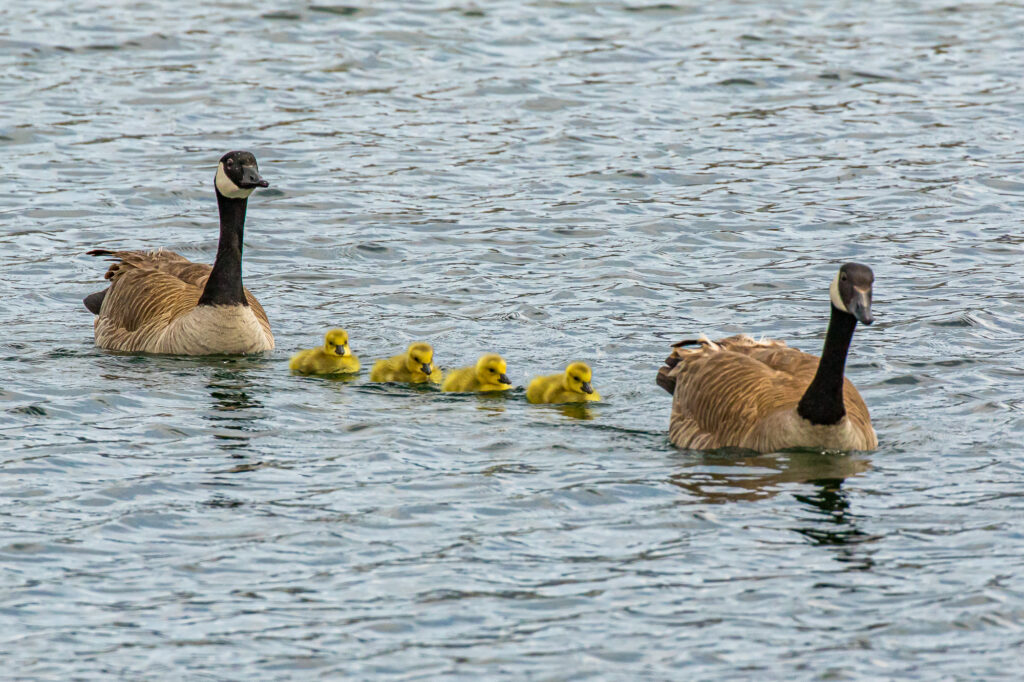This can be a challenging time psychologically for the people of Jackson Hole, especially residents who have moved here in recent years. We haven’t had much more than a couple dustings of snow in the past month. The sublimation on south-facing buttes catalyzed by our intense mountain sun, combined with some snow melting on above-freezing days, has led to some patches of bare ground at the lower elevations. These weather patterns can fake us into thinking that spring is coming soon. The hard news for some to hear is that we have a bunch of winter left to go. So sit back and enjoy, or better yet, get out there and experience the unique first signs of the impending change in seasons.
Whether you love long winters or not, there are some fun wildlife transitions to start looking for, especially in the nesting and breeding of birds. Keep an eye out for ravens being seen more often in pairs, and beginning to perform courtship displays. Listen after dark for great horned owls, a sign that pairs are moving towards their mating season. Canada geese will begin re-claiming their nest territories, or developing new ones. The geese get a head start on the osprey for nest platform choices, as the osprey won’t arrive in this valley until late March and early April. Believe it or not, some bald eagles will begin laying eggs in the end of February and beginning of March.

For those new to the area, or new to birding, I always think that winter in Jackson Hole is a great time to learn about our avian locals. Of the approximately 300 bird species that can be found here in summer, only about 30 of them commonly spend the winter. So, it’s much more manageable to get to know those 30 species by sight, especially since they are more easily seen now due to the lack of leaves on the willows, cottonwoods, and aspens.
Then, as late winter arrives and transitions into spring, you can see a few new birds per week as they return from their wintering grounds in the southern United States, Mexico, Central America, and South America. Challenge yourself to spot the first red-winged blackbirds or European starlings in the next couple weeks. Then it’s the mountain bluebirds very soon after. It’s remarkable to think of the neotropical migrant bluebirds returning when it’s still very much winter in early March. One would hypothesize that they arrive here so early to claim their nesting cavities, these tree holes being a finite resource.

What is it that these insect eaters can possibly be foraging on? Take a Nordic ski or snowshoe along rivers and creeks on sunny days in early March, and be amazed by the emerging aquatic insects (such as midges and stoneflies) that you see walking on the snowy bank. Why would these cold-blooded insects, with so much body surface area for the snow to suck away body heat, be moving along the snow surface? Perhaps in the cost-benefit analysis of life, the chance of freezing to death is outweighed by the opportunity to accomplish breeding before the vast majority of insect eaters return to Jackson Hole.
Also, don’t forget about snow fleas being an important mountain bluebird food source. Snow fleas (not really fleas, but rather part of a very diverse and abundant group of invertebrates called springtails) overwintering in the soil, make their way up through the snowpack on sunny March days to take care of their breeding efforts on top of the snow. What may look like specs of pepper on the snow, suddenly hop a few inches in the air. Snow fleas are a good reason to carry a magnifying glass in your ski pack, as the closer you look, the more you see.

Change is literally in the air! As we enjoy the last of winter (hopefully a few more surprise snowfalls) the anticipation of the arrival of spring ramps up. While we may not have the full summer lineup of birds to admire, now is the time to enjoy special early season rituals and train our eyes to see the quick to change ecosystem around us. Here is to the last of winter!
-Kevin Taylor
Want to be the first to know what Kevin notices next? Or when new wildlife tours are launching? Sign up for our Wildlife Expeditions newsletter, Fresh Tracks, to receive the latest wildlife news, exclusive tour discounts, and more!


